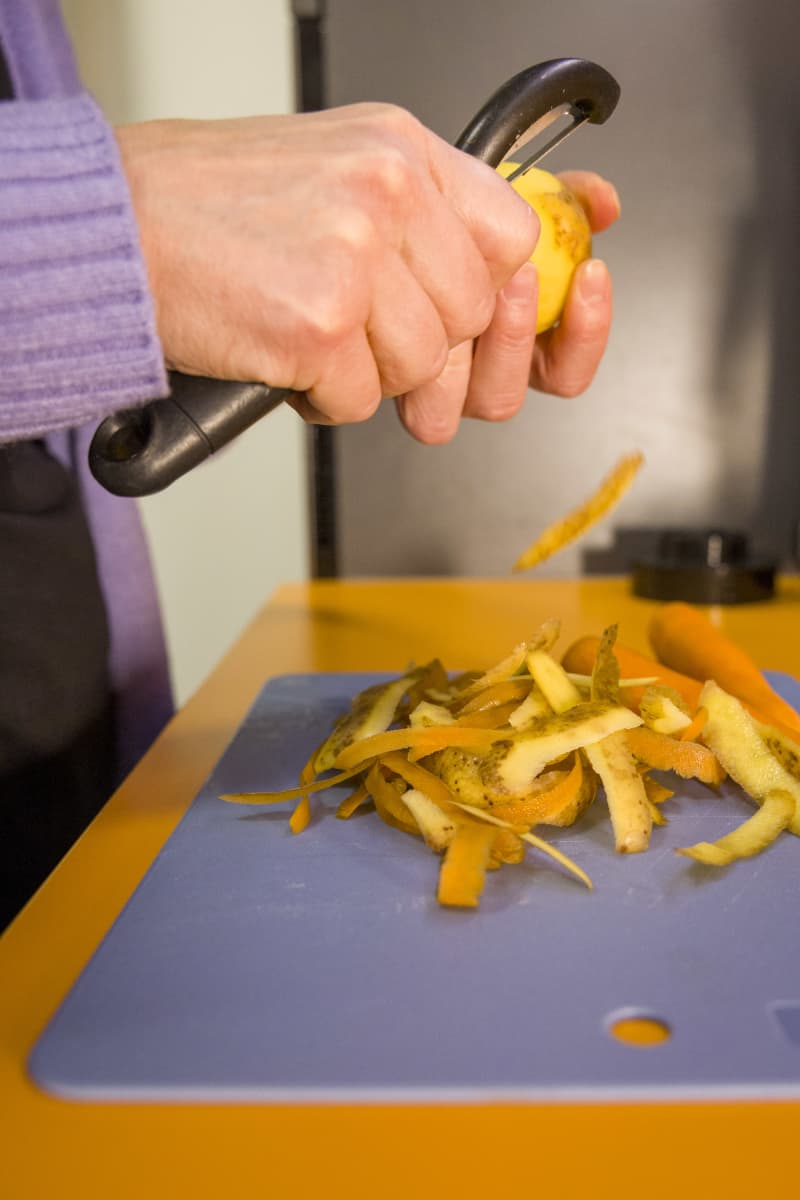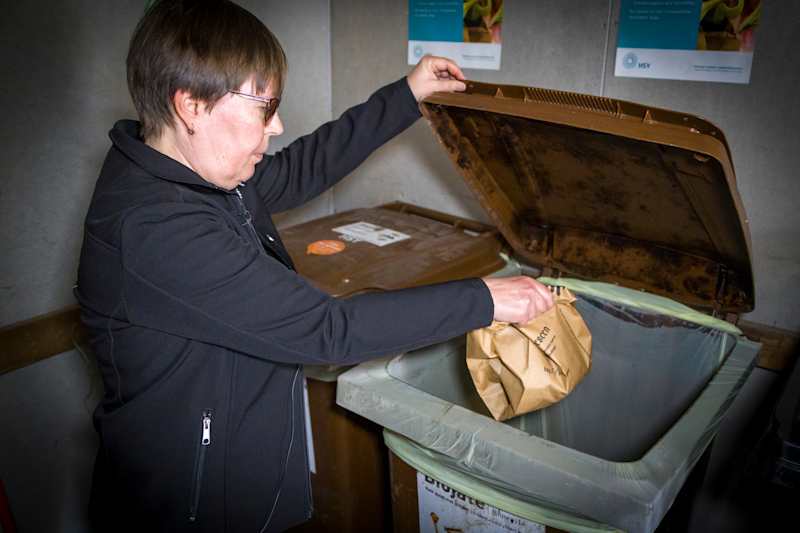The obligation to collect bio-waste is extended to all residential buildings in agglomerations of more than 10 000 inhabitants. In many areas, collection will start already this year, and the whole of Finland will be covered by the end of next year.
Cooking and leftovers in kitchens generate a lot of bio-waste. Soon, more and more homes will have to sort it.

The change is based on the revised Waste Act, and municipalities are responsible for the separate collection of biowaste.
What does change mean?
Bio-waste bin or home composter?
Residents can take a bio waste container, which is emptied by the waste management company for a fee. Another option is to get a composter and compost the food waste yourself. In many localities, it is also possible for neighbors to make carpool agreements.
For example, HSY, which handles the waste management of the capital region and Kirkkonummi, has received many inquiries from residents regarding the choice of bio-waste sorting method.
– Composting is suitable for people who, for example, grow something in the yard and have a use for the soil. Of course, you have to be somewhat interested in the matter, because compost obviously needs a bit of vigilance and care, says Minna Partti.

Of course, space is also an essential question. A home composter can fit even in a fairly small yard, but it cannot be placed right in front of doors and windows. Regional regulations for placing compost vary.
When composting kitchen waste, the composter must be designed for food waste – thermally insulated and protected from harmful animals.
The bio waste container emptied by the waste management company is the most effortless option for many.
– If you want to get out easily, you can take the bio waste container. Especially if you share it with your neighbors, the costs remain very reasonable, says Minna Partti.
What about the price?
Many residents of small properties are concerned about the price.
At HSY, the cheapest price for the separate collection of bio-waste is around 90 euros per year per container. In this case, the 140 liter ventilated bio waste container is emptied every four weeks, and the container is used by a maximum of eight people.
Sorting bio-waste can reduce the need to empty the mixed waste container. Mixed waste is more expensive than organic waste.
The prices of composters suitable for food waste, on the other hand, vary depending on the model from around a couple of hundred euros upwards. Using a composter is cheaper in the long run.
– If you invest in a composter and buy mixing materials, there is an initial investment, but after that there are no waste management costs for bio-waste, says Minna Partti.
Residents are informed about the arrangements for their area
Confusion has been caused in some areas by where a resident must report participating in separate collection of biowaste or self-composting food waste.
Representing public waste management and municipal waste facilities, Finland’s circular force emphasizes that residents do not need to contact the regional waste management authority or waste facility before it is requested.
– Residents are well informed in their own area. There is no need to rush, says Kaisa Halme.

Reform may proceed at different speeds in neighbouring municipalities
So what about the schedule?
The organization of separate collection of bio-waste in accordance with the obligations is progressing at different paces in different parts of Finland and in neighboring municipalities as well.
– Some of the waste plants have already started, and some will take until the end of 2024 before all the obliged properties are covered by this collection, says Kaisa Halme.
According to Kaisa Halmee, there are also areas in Finland where bio-waste has been collected in the manner required by the new waste law even now and nothing will necessarily change.
At the same time, biowaste collection will be transferred to be organized by the municipality in those areas where this has not been done so far.

For example, HSY, which handles waste management in the capital region and Kirkkonummi, has split the reform into parts.
Currently, HSY is collecting information in Espoo, Kauniainen and Kirkkonummi on which choice residents of properties with 1-4 apartments make when sorting bio-waste. In May, HSY will also start delivering bio-waste containers to properties in these areas. Data has already started to be collected in Vantaa as well, and Helsinki will gradually follow.
One third of mixed waste is still bio-waste
What about the fundamental question: Why is the sorting of biowaste necessary in households at all?
According to Finland’s circular power, there is still a lot of bio-waste in mixed household waste, on average about a third by weight.
If bio-waste is left unsorted, the benefits obtained from it are also wasted.
– We are wasting nutrients and the possibility of energy made from bio-waste. There are more and more uses for biogas all the time, and we are wasting valuable biogas raw material here, says Kaisa Halme.
*You can discuss the topic on 24.4. until 11 p.m.*
